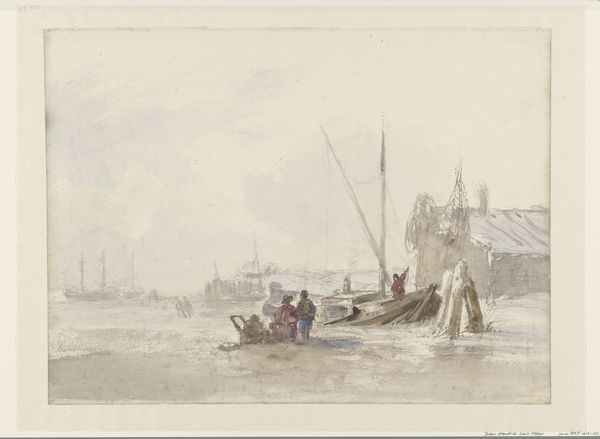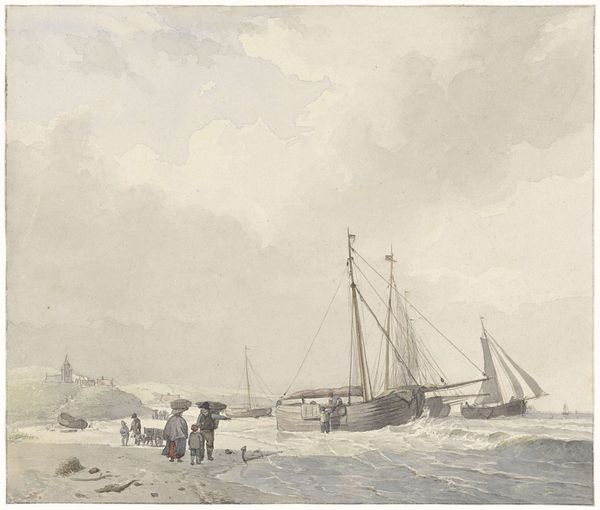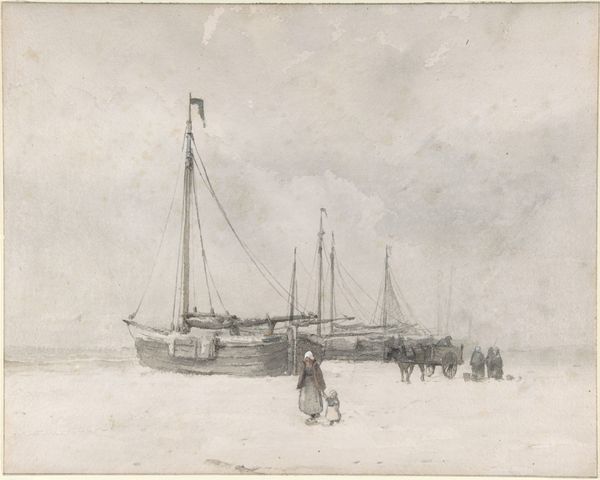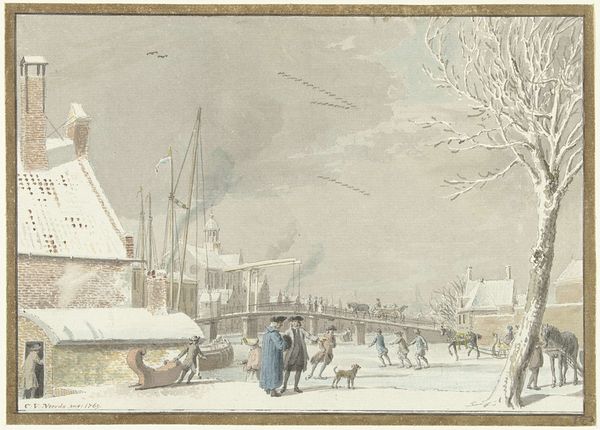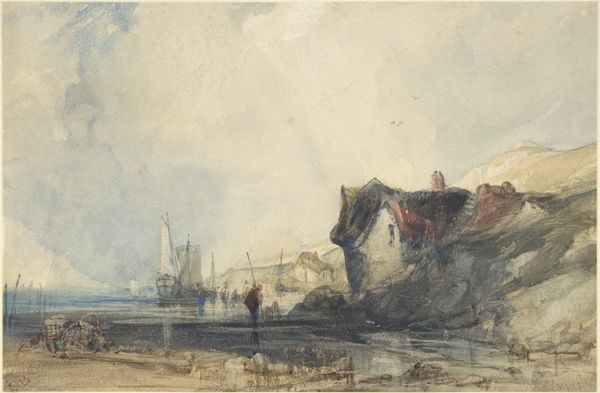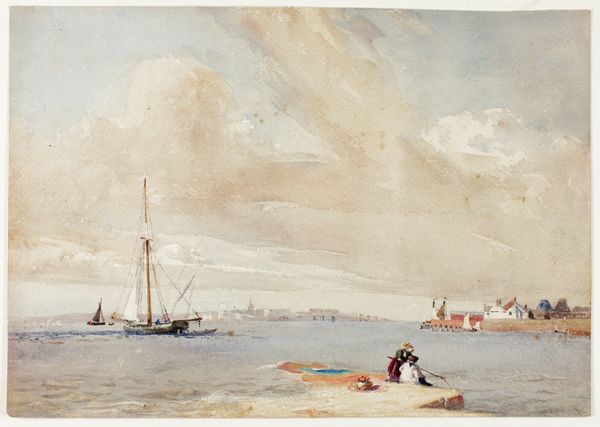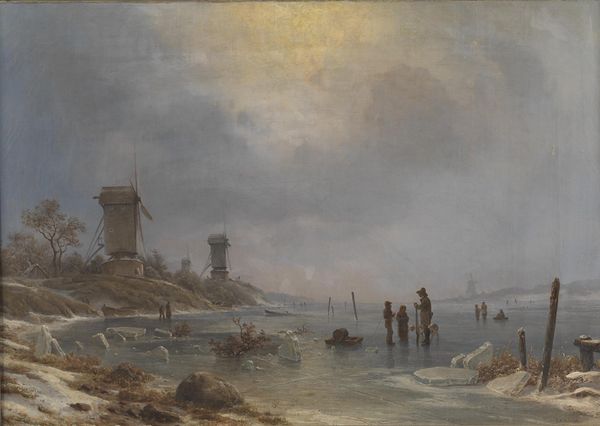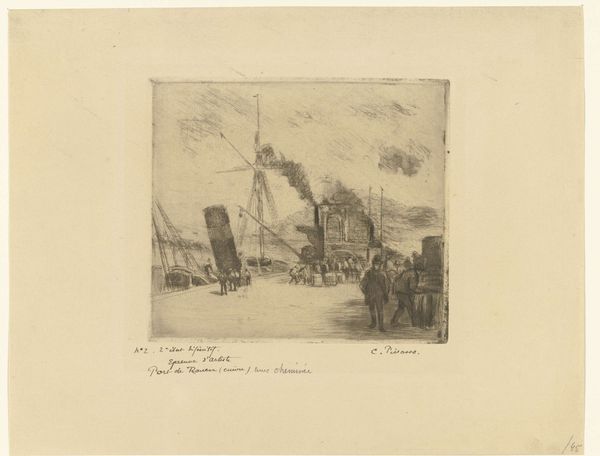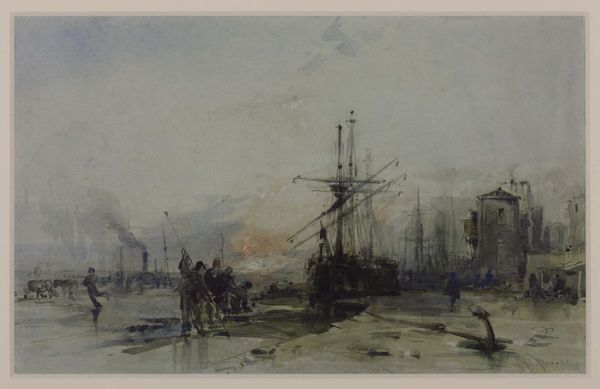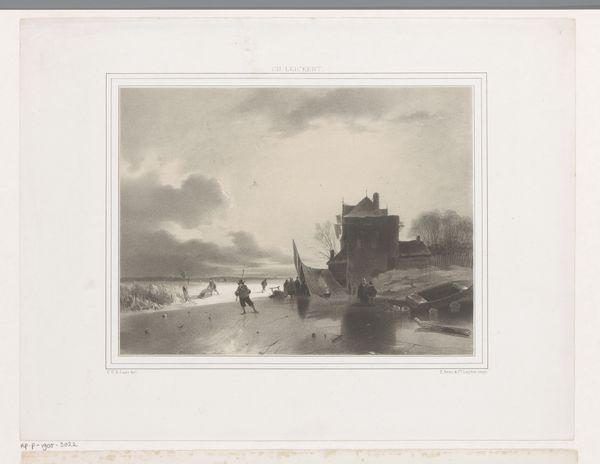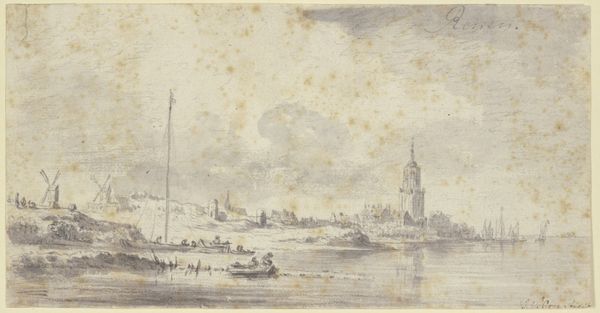
Dimensions: height 50 mm, width 83 mm, height 90 mm, width 123 mm
Copyright: Rijks Museum: Open Domain
Editor: So, this is Andreas Schelfhout’s “Winterlandschap met figuren en een bepakt paard op het ijs," created in 1859 using watercolor. It feels muted, and the composition emphasizes the vastness of the frozen landscape against the figures. What catches your eye in this work? Curator: Initially, the most striking formal aspect is Schelfhout's delicate rendering of light and atmosphere. Note how the artist uses a limited palette to convey the cold, overcast winter day. The subtle gradations in tone create depth and volume, particularly across the ice. Editor: Yes, the way the light reflects off the ice is captivating. Is there significance in how the figures are positioned? Curator: Observe the positioning of the figures in relation to the buildings and other compositional structures. Their placement is key to understanding how Schelfhout guides our gaze. Do you see a visual pathway established from left to right? Editor: Now that you mention it, I do see that the eye moves across the picture plane along with the people skating. But it almost feels like their activities don't disrupt the cold, serene feeling of the painting as a whole. Curator: Precisely. There is a certain geometric tension. While appearing naturalistic, each element is carefully arranged to contribute to the overall pictorial structure and emotive tonality. Consider how each application of watercolour wash contributes to the final construction, as form. Editor: So, beyond being a pretty picture, it's a meticulously constructed arrangement of shapes, forms, and tonal values that communicate a very particular sense of place and mood. I guess I learned to pay even closer attention to visual construction! Curator: Precisely! And that rigorous observation unlocks ever greater nuances within artworks, revealing more profound insights into their composition and impact.
Comments
No comments
Be the first to comment and join the conversation on the ultimate creative platform.
